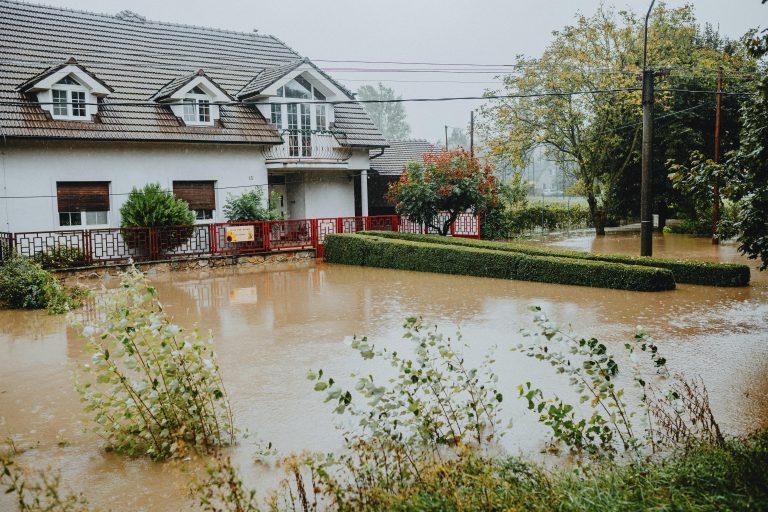Flooding has a way of shaking even the calmest homeowner. One moment your floor is dry, the next you’re standing in water trying to figure out where it’s coming from and how bad it’ll get. The key is to move fast without panicking. You can’t undo what’s already happened, but you can control what comes next, and that’s where real recovery begins.
Stay Safe Before Doing Anything Else
It’s easy to forget how dangerous household flooding can be when adrenaline kicks in, but safety has to come first. Turn off electricity at the breaker if you can safely reach it. Avoid walking through standing water until you’re sure it’s not electrified. If the flooding came from a burst pipe or appliance, shut off your main water valve. You don’t want gallons turning into hundreds of gallons while you’re figuring things out.
Once you know it’s safe to move, start documenting. Take photos and short videos before you touch anything. It feels counterintuitive when your instinct is to start mopping, but this step will save you time and stress later when dealing with insurance claims. You’ll thank yourself for the evidence when everything’s dried out and you’re sorting through receipts.
The First Cleanup Steps Matter Most
The early hours make a big difference in how much damage you’ll face later. Get any rugs or fabrics out of the way and prop up furniture legs using foil or wood blocks. The goal is to keep moisture from seeping upward and creating more damage than the initial flood caused. Open windows if the air outside is dry, and run fans or a dehumidifier if you have them.
If water has saturated drywall, insulation, or flooring, the cleanup moves beyond towels and fans. That’s when calling professional water damage restoration services is a must. These teams have specialized tools to dry spaces completely, not just the surface you can see. They’ll detect hidden moisture that, left untreated, can lead to warped floors, weakened structures, or mold that sneaks up months later. Professionals may sound expensive at first glance, but they often prevent far bigger repair costs down the road.
Why DIY Can Make It Worse
It’s tempting to believe a few towels and some determination can fix anything, but water doesn’t play fair. When homeowners attempt quick plumbing fixes backfire, it’s usually because what looks simple is often more complex. Tightening a connection or using store-bought sealant might temporarily stop a leak, but pressure can build behind walls, causing a blowout that turns a small drip into a full-blown indoor waterfall.
Even if the water recedes, it doesn’t mean it’s gone. Moisture can hide under baseboards, behind cabinets, or within flooring layers. Without proper drying equipment, you’re essentially sealing in a problem that’ll show itself later through smell, discoloration, or mold growth. The smarter move is to stop the leak’s source, document what happened, and bring in a licensed plumber or restoration specialist to inspect. Think of it as the difference between patching a wound yourself and getting stitches that heal correctly.
Protecting What You Can Salvage
After you’ve stopped the source and gotten professionals involved, focus on what can still be saved. Electronics should be unplugged and left untouched until cleared by an expert. Anything porous, like books, paper, or fabric, needs to be dried within 48 hours or it’s probably lost. Move items to a dry, ventilated spot and don’t stack them too tightly; airflow matters more than speed here.
If the flooding came from clean water, like a broken supply line, some items can often be restored. If it came from a backed-up sewer or stormwater, though, treat anything contaminated as unsafe. No one likes throwing away belongings, but it’s better to lose a few items than risk exposure to bacteria or toxins that can linger. Keeping what’s safe and discarding what’s not is part of the mental reset that makes recovery possible.
Insurance and Repair Work Without the Headache
Contact your insurer early, even if you don’t have the full picture yet. Most companies prefer you report immediately rather than waiting for an estimate. Send them the photos and videos you took earlier and keep a simple log of conversations, dates, and expenses. When adjusters visit, walk them through everything that got wet, including hidden areas. Clarity helps you avoid disputes later.
As repairs begin, stay realistic about timelines. Restoration takes longer than most people expect because surfaces have to be completely dry before rebuilding. If contractors rush it, you’ll likely end up with warped floors or musty odors that keep coming back. A good team will take moisture readings before installing new drywall or flooring. It’s not about perfection, it’s about getting your home healthy and functional again.
Weatherproofing for the Future
Once you’ve survived one flood, you start noticing all the ways to prevent another. Seal cracks in your foundation, clean gutters regularly, and consider a sump pump or backflow valve if you’re in a flood-prone area. These upgrades don’t just prevent future damage, they give peace of mind. The next storm or leak won’t feel like a total ambush because you’ll know your home’s defenses are in place.
Small design changes can help, too. Move electronics and storage boxes off basement floors, install water sensors under appliances, and make sure your landscaping slopes away from the foundation. Preventive steps might not be exciting, but they’re worth every bit of effort when the next downpour comes.









